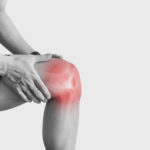July 1, 2016
If you’ve got lower back pain, friends and family have probably given you plenty of advice. Some people will tell you to ice it, while others will say to apply heat. The answer to the question of which is best often depends on the type of pain you are experiencing and who you ask.
A survey of physical therapists in 2015 found that among 327 physical therapists (PTs) participating in the study, the percentage of those using heat or ice for pain ranged from 47.7 percent to 66.8 percent. The range varied, depending on whether the PTs were treating the patient’s musculoskeletal pain in an inpatient or outpatient setting. Even so, there is only limited research evaluating the effectiveness of these treatments.[1]
The therapists were also asked about which treatment to recommend for acute back pain that occurs after an injury, muscle strain, or overexertion. While there is no consensus, in general, experts say to apply cold therapy in the first day or so after the injury. After the swelling and inflammation have diminished, switching to heat therapy may be helpful.
How cold and heat therapy works to relieve back pain
These treatments are based on the physiology of your body’s natural healing processes. After an acute injury, your body’s emergency repair cells rush to the site of the damaged tissue to stop any bleeding if needed, protect against infection, and begin regrowing cells to replace the damaged ones.
When cold can help with back pain due to inflammation
Inflammation and swelling is part of the body’s natural response to injury, but once the threat has been neutralized and healing is underway, inflammation and swelling can actually increase pain. In these cases, ice acts to blunt the inflammatory response, which helps reduce swelling and calms the nerves around the injury site. Once the swelling has gone down, switching to heat therapy will likely be more helpful.
When heat can help with back pain
The physiological effects of heat therapy include temporary pain relief, increased blood flow and metabolism, and improved elasticity of connective tissues.[2] Application of heat helps with stretching of soft tissues around the spine and decreases stiffness. Flexibility is an important part of maintaining a healthy back.
For that reason, if you find you have back pain after exercise, you might consider heat therapy before exercise and ice afterward. The heat will relieve muscle tightness, increase elasticity, and warm up muscles before use, and the ice afterward will reduce inflammation.
In any case, you should keep in mind that the pain relief from the application of heat or cold is most likely temporary and not intended as a long-term cure. In a 2010 study comparing heat and cold therapy for acute back pain, the researchers concluded that “the choice of heat or cold therapy should be based on patient and practitioner preferences and availability.”[3]
Is heat or cold therapy effective for chronic back pain?
For chronic back pain due to irritation of nerves in the spine or where the nerve exits the spine, whether the application of heat or cold therapy will provide pain relief, depends on what is causing the nerve irritation.
If the pain is caused by an injury to muscles or tendons, cold therapy can be effective, along with rest and avoidance of the positions or activity that caused the muscle inflammation in the first place. In these instances cold can be enough to allow the muscle to return to a normal state and produce long-term relief.
If it is caused by a herniated or bulging disc, a narrowing of the canal in the vertebra, bone spurs, or any of several other causes of nerve irritation and back pain, heat or cold therapy will only have limited benefit in terms of pain relief.
At Healthcare Associates the emphasis is on providing a personalized approach to each patient’s needs. We work with you to determine the underlying cause of your back pain and find the optimal treatment for you. Book your appointment today.
[1] Ladeira DE, Cheng MS, et al. Physical therapists’ treatment choices for non-specific low back pain in Florida: an electronic survey. J Man Manip Ther. 2015 May; 23(2): 109–118. Table 2. doi: 10.1179/2042618613Y.0000000065
[2] Nadler SF, Weingand K, Kruse RJ. The physiologic basis and clinical applications of cryotherapy and thermotherapy for the pain practitioner. Pain Physician. 2004 Jul;7(3):395-9.
[3] Garra, G, Singer, A. Heat or Cold Packs for Neck and Back Strain: a Randomized Controlled Trial of Efficacy. Academic Emergency Medicine, Volume 17, Issue 5, May 2010, Pages 484-489
DISCLAIMER
The information featured in this site is general in nature. The site provides health information designed to complement your personal health management. It does not provide medical advice or health services and is not meant to replace professional advice or imply coverage of specific clinical services or products. The inclusion of links to other web sites does not imply any endorsement of the material on such websites.



